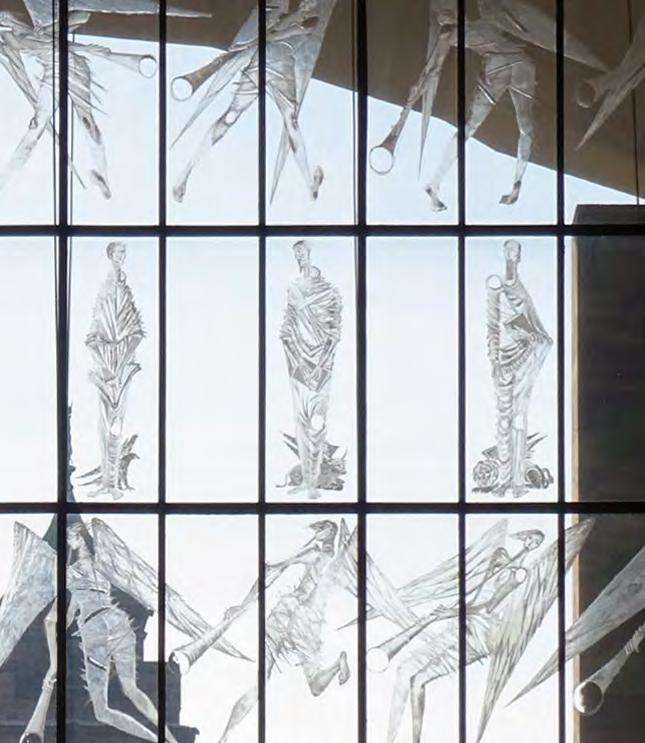PRELIMINARIES
1.1 PURPOSE OF THE REPORT Coventry Cathedral is the cathedral for the Church of England’s Diocese of Coventry. With support from the Getty Foundation as part of the ‘Keeping it Modern’ scheme, the Cathedral has been able to develop its first comprehensive Conservation Management Plan (CMP) for the whole precinct. This CMP is intended as a strategic document, contributing to the successful future management and use of the Cathedral, which includes the new cathedral, the ruined cathedral and the wider cathedral precinct (see section 1.1.1 for definitions of the site). The CMP will achieve this by articulating the agreed significance of the site and providing conservation-led policies governing use, function, repair, restoration and adaptation. The successful conservation and management of the Cathedral will ensure the continuing use and enjoyment of this unique place of worship.
This CMP does not seek to impose a set of rigid rules and parameters on Chapter, but offers a framework for the informed management of change.
It will integrate with the Coventry Cathedral Strategic Plan, 2017– 2022 and the ruined cathedral CMP, and support future condition surveys, maintenance work, and interpretation.
The production of the CMP is set within the context of Coventry’s UK City of Culture 2021 and the need to support an increase in visitors to the Cathedral. The report will therefore focus on three areas:
The CMP will be a foundation for current and future developments, providing practical policies and actions that will help guide the Cathedral to a sustainable, educational and useful future. Identifying, assessing and analysing the current issues at the site and presenting opportunities going forward, it will also be possible to assess whether these priority objectives have been met.
•
analysis of the new cathedral and its setting as a basis for assessing the impact of immediate changes such as new facilities;
•
management and decision-making tools to ensure undefined future change is contained within a transparent conservation framework; and
•
provision of best practice advice to support the above.
The purpose of the CMP is: •
to understand and present a synopsis of current use and historic development of the Cathedral;
•
to define and articulate the significance of the Cathedral – why it is important and to whom – in a way that will inform the management of change;
•
to provide overarching guidance on the long-term conservation management of the Cathedral;
•
to be useful and useable by a wide range of stakeholders at strategic and operational levels; and
•
to share and disseminate the findings and new research of the CMP to support national and international conservation of Post-War architecture and places of worship in particular.
Whilst Coventry Cathedral has been the subject of historical and theological studies in the past, limited attempts have been made to place an understanding of the Cathedral within a conservation planning framework to support its future management. The CMP will be a living document, with a clearly defined purpose, to be used and updated as required. The preparation of this document is not an end in itself, but will inform and shape future decisionmaking through understanding and specifically, the assessment of significance. Having a robust CMP will provide a firm foundation for management and resourcing decisions.
08
The CMP is compliant with the Church of England’s Church Buildings Council guidance on the production of CMPs, Historic England’s Conservation Principles Policies and Guidance (2008, 2018 draft), the ICOMOS Madrid-New Delhi document (2017) on the conservation of 20th century cultural heritage and the National Planning Policy Framework (2019).














